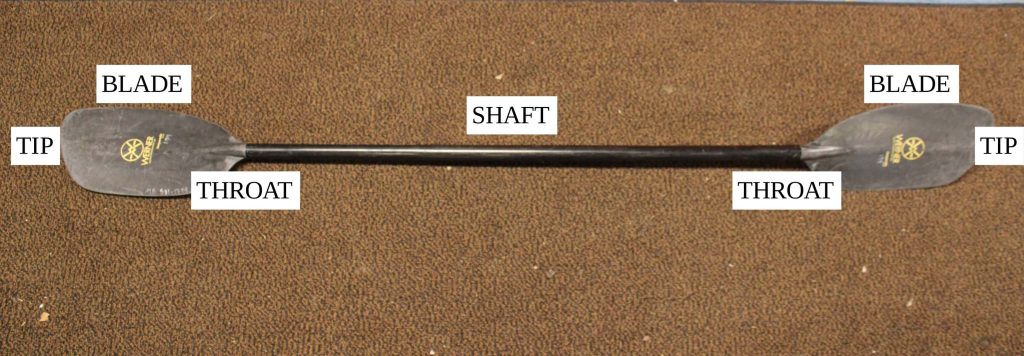About Kayaking
Kayaking is a fun way to get out on the water. From a casual river paddle to sea kayaking to whitewater, there is something for everyone. This page goes into the basics of parts of a kayak, parts of a kayak paddle, and an introduction to some paddle strokes.
Parts of a Kayak
Bow: The front-most part of the kayak.
Stern: The rearmost part of the kayak.
Cockpit: The area in which the paddler sits while paddling.
Combing: The part that goes around the cockpit. This is where a spray skirt connects to the boat.
Seat: Where the paddler sits.
Thigh Braces: Inside the cockpit. The paddler should maintain contact with the thigh braces when paddling to ensure balance.
Foot Pegs: Inside the cockpit. The paddler’s feet should maintain contact with the foot pegs when paddling and should be adjusted to fit the paddler before launching the kayak. The paddler should push on the foot pegs while paddling to help gain momentum.
Parts of a Kayak Paddle

Shaft: The long skinny section of the paddle that the paddler holds when kayaking.
Throat: Where the shaft meets the blade and the blade starts to widen.
Blade: The part that gets submerged in the water. The blade is typically curved, and this curve (the power face) should face the paddler when paddling.
Tip: The bottom-most part of the paddle, at the end of the blade.
Basic Kayak Strokes
Forward Stroke
Moves the kayak forward. The blade enters the water near the paddlers’ feet. Using torso rotation and keeping the paddlers’ box, the paddle is brought to the hip, then the blade is removed from the water. This motion is repeated, alternating sides of the boat. Make sure the blade gets fully submerged with each stroke.
Reverse Stroke
Moves the kayak backward. The blade enters the water behind the seat of the kayak with the power face pointing towards the stern of the boat. Be sure to plant the paddle in the water, almost like a beaver tail. Then, using torso rotation and facing the paddler’s work, the paddle is brought to the hip and the blade is removed from the water. This motion is then repeated, alternating sides of the boat. This stroke can also be used to slow down the kayak when propelling forward too quickly.
Draw Stroke
Moves the kayak sideways towards the paddle. The paddler first reaches the paddle away from their boat in the direction they want to move towards. The paddler should make sure that they are not leaning out over the boat, as that could lead to tipping the boat over. The paddler should then pull their boat towards the paddle and slice their paddle out of the water when their paddle reaches the boat.
Sweep Stroke
Turns the kayak. The paddler first submerges the blade near their feet. Then the paddler makes a large arc in the water, keeping the paddle at an almost even angle with their boat. When the paddle reaches the back of the boat, remove the blade from the water. To turn the boat left, use the sweep stroke on the right side. To turn the boat right, use the sweep stroke on the left side.
